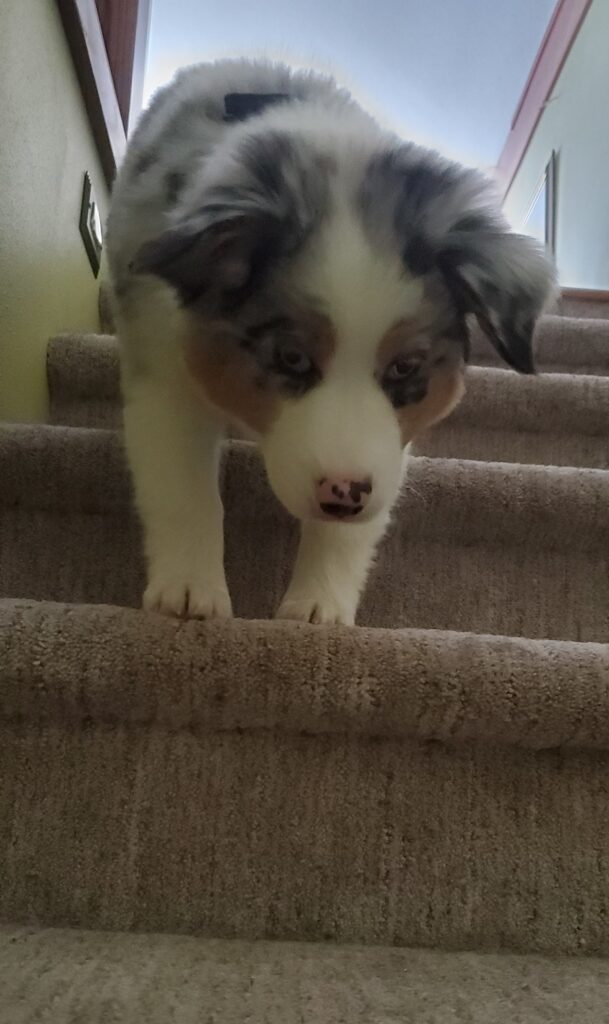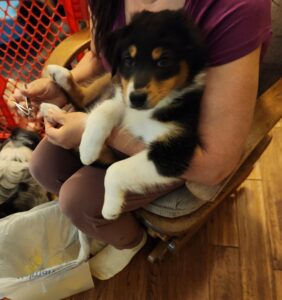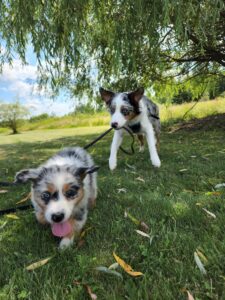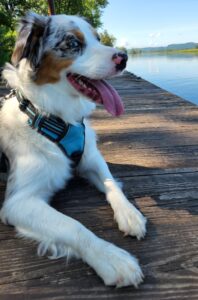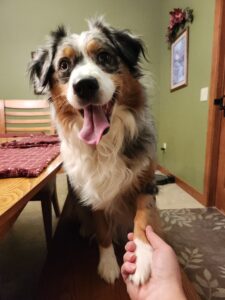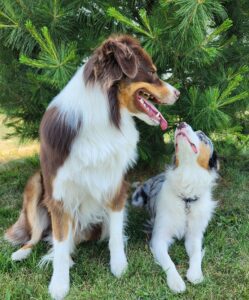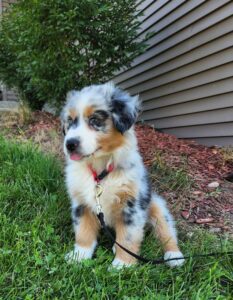Navigating the world of puppy exercise can be both exciting and daunting for new pet parents. Understanding puppy exercise involves recognizing the unique needs and limitations of puppies, ensuring they receive appropriate physical activity to support their growth and development. From the importance of self-directed play to the risks of repetitive exercise, this guide delves into the essential considerations for ensuring your puppy’s exercise routine promotes health, happiness, and safety.
The Importance of Growth Plates
When it comes to puppy exercise, one must consider a crucial element known as “growth plates.” These soft areas located at the ends of young dogs’ long bones are instrumental in bone elongation until the completion of puberty. As hormonal changes prompt growth plate closure, they gradually become thinner, typically completing this process by around 18 months of age. However, until this closure occurs, growth plates remain soft and vulnerable to injury. Unlike adult dogs, whose bones are supported by muscles, tendons, and ligaments, puppies possess stronger soft tissues relative to their growth plates. Consequently, injuries to these plates, rather than resulting in simple sprains, can lead to significant damage or separation. Such injuries may not heal properly or in time, potentially resulting in misshapen or shortened limbs, predisposing the puppy to further injuries in adulthood.
The Soft Nature of Puppy Bones
In addition to the vulnerability of growth plates, puppies’ bones are inherently softer compared to those of adult dogs. Similar to human children, puppies do not attain maximum bone density until after puberty. As a result, spiral fractures, particularly in the tibia, are common among puppies, with approximately 50% of all fractures occurring in dogs under one year of age. These fractures, similar to “Toddler’s Fracture” in humans, are attributed to the relatively stronger fibrous layer of bone compared to the elastic interior. Consequently, any exercise exerting torque on bones elevates the risk of spiral fractures in puppies.
Endurance and Cardiovascular Limitations in Puppies
Puppies lack the cardiovascular capacity for endurance exercise, hindering their ability to develop endurance even with increased physical activity. While sustained exercise significantly enhances aerobic capacity in adults, its impact is limited in children. This discrepancy underscores the importance of postponing endurance training until puppies have matured. Prolonged walks and exercise sessions, while beneficial for adult dogs, pose minimal benefits for puppies and increase the risk of injury.
The Benefits of Appropriate Puppy Exercise
Despite concerns regarding growth plates and fractures, appropriate exercise is not only safe but essential for puppies. Research indicates that exercise contributes to enhanced bone density in children and reduces the risk of adult fractures by up to 50%. This holds true for dogs as well, emphasizing the critical role of suitable exercise in fostering robust bone development and preventing future injuries.
The Power of Self-Directed Play:
For puppies under 18 months old, self-directed play reigns supreme. Encourage your pup to engage in free play, allowing them to explore, investigate, and simply enjoy being a puppy. If you notice signs of fatigue or reluctance to walk, respect their cues and allow them to rest. Additionally, consider creating a designated digging area in your yard to provide natural exercise and mental stimulation for your puppy.
Beware of Repetition:
One of the leading causes of growth plate and soft tissue injuries in puppies is repetitive exercise. Until your pup reaches approximately 18 months of age, avoid long hikes or walks, and opt for plenty of free-play sessions instead. Allow your puppy to set the pace during short walks or backyard explorations, prioritizing their comfort and well-being.
Sniff ‘n Stroll:
While lengthy hikes may be off-limits, leisurely strolls around the backyard or short, meandering walks are perfect for puppies. Let your pup lead the way, sniffing, exploring, and enjoying the outdoor environment at their own pace. These relaxed outings provide valuable opportunities for socialization and enrichment, ensuring a positive experience for your companion.
Trail Blazing with Kibble Trails:
Kibble trails offer an excellent way to mentally and physically challenge your puppy while keeping them engaged and entertained. Create a trail with gentle curves in your backyard, dropping treats along the path at regular intervals. This engaging activity encourages problem-solving and exploration, providing both mental and physical stimulation for your puppy.
Choosing Playmates Wisely:
When it comes to playtime, ensure your puppy interacts with well-matched and gentle playmates. Consider factors such as size and play style, avoiding overly physical play that may lead to injuries. Keep a watchful eye on interactions and be prepared to intervene if play becomes too rough, prioritizing your puppy’s safety above all else.
Embrace Soft Landings:
Jumping off furniture poses a significant risk of spiral fractures in puppies. Minimize this risk by keeping your puppy off elevated surfaces unless supervised. Additionally, consider using carpeting and heavy carpet pads around furniture to cushion impact and reduce the likelihood of injury.
Exercise Early and Wisely:
Engage your puppy in off-leash, self-directed exercise on varied terrain to promote healthy joint development and reduce the risk of hip dysplasia. Early exposure to gentle, rolling landscapes can have a positive impact on your puppy’s long-term joint health. Prioritize self-directed play in safe environments to ensure optimal growth and development.
Safe and Gentle Play:
Encourage gentle play with toys to prevent heavy impact and twisting on your puppy’s bones and soft tissue. Roll balls or drag toys on the ground to minimize the risk of injury, and avoid tugging on toys held high to protect your puppy’s delicate neck.
Effective Ways to Tire Out Your Puppy:
When you need to tire out your puppy, focus on problem-solving and training activities rather than extended exercise sessions. Short bursts of training, particularly through free shaping behaviors, can exhaust your puppy both mentally and physically, providing a rewarding and stimulating experience.
Conclusion
Mastering the art and understanding puppy exercise is about finding the delicate balance between providing opportunities for physical activity and safeguarding your companion from potential injuries. By prioritizing self-directed play, avoiding repetitive exercises, and selecting appropriate activities for your puppy’s age and stage of development, you can create a fulfilling and beneficial exercise routine tailored to their individual needs. With patience, consistency, and a keen understanding of your puppy’s capabilities, you can embark on a journey of healthy growth and lifelong well-being together.

